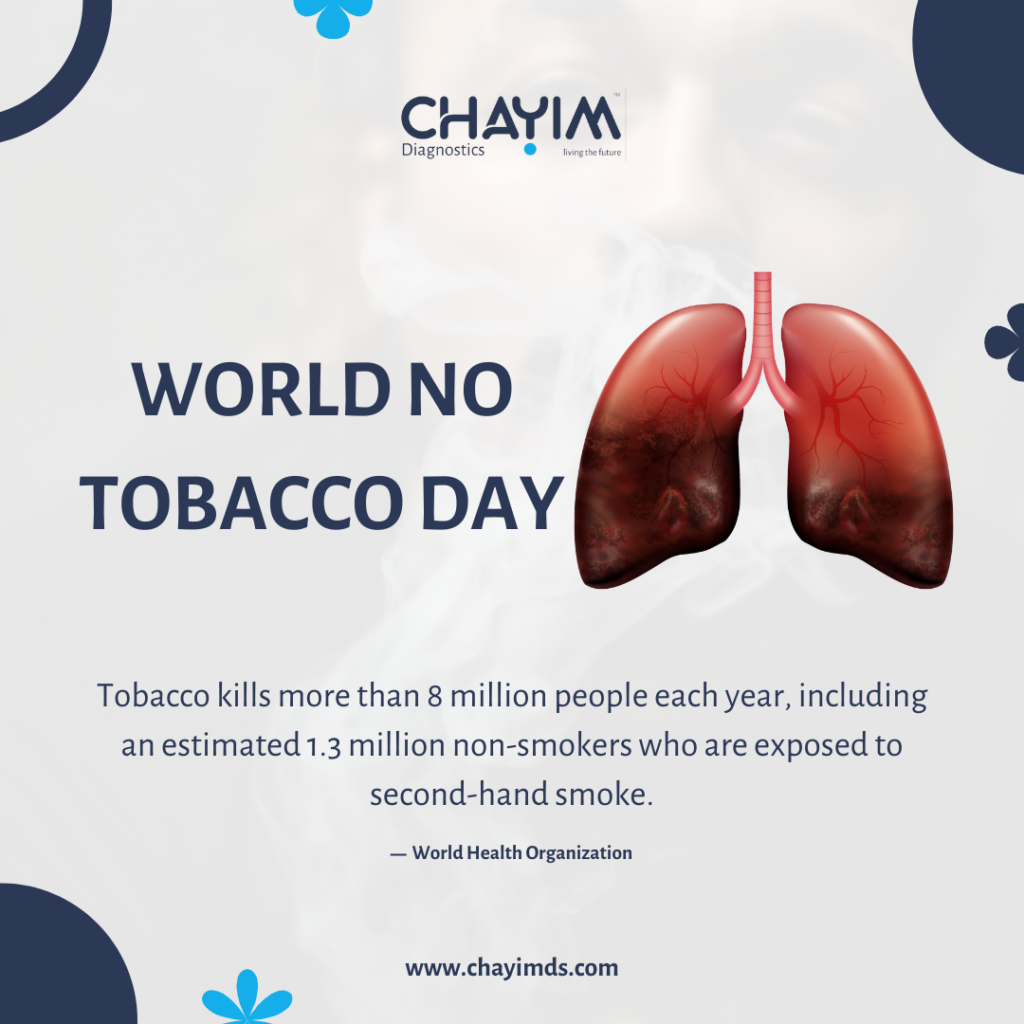World No Tobacco Day – Protecting children from tobacco industry interference

As World Tobacco Day dawns upon us once again, it brings with it an opportunity to raise awareness about the health risks associated with tobacco use and advocate for effective policies to shield youth from harmful tobacco products and deceptive advertising practices and reduce tobacco consumption. Smoking poses numerous health risks, particularly to the lungs.
The major way of tobacco consumption is through the smoking of cigarettes and there are two types of smokers:
Active smokers:
These are people we know as smokers that and consume cigarettes directly.
Passive smokers:
These are people (For example; Children) who do not smoke but are around or always around smokers and inhaling the toxins of the smoke.
The effects smoking has on the lungs are the same for both smokers, that is why it advised that children are protected from such environments as it not only influences their character but also exposes their health to the toxins from tobacco.
According to the World Health Organization tobacco fact sheet, statistics show that tobacco kills more than 8 million people each year including an estimated 1.3 million non-smokers (passive smokers).
Dangers of Smoking Tobacco
Here are some key points regarding the risks of smoking and its effects on the lungs:
- Lung Cancer: Smoking is the leading cause of lung cancer; it accounts for most cases in the world. The carcinogens in tobacco smoke damage the lungs cells, leading to the development of cancerous tumors.
- Chronic Obstructive Pulmonary Disease (COPD): Smoking is the primary cause of COPD; COPD are progressive lung diseases which encompass chronic bronchitis (a condition that occurs when the lungs are inflamed and produce lots of mucus making it hard to breath) and emphysema (a condition that occurs when the lung cells are damaged due to excessive smoking) which are characterized by airflow obstruction and breathing difficulties. Quitting smoking is the most effective way to slow its progression.
- Increased Risk of Infections: Smoking weakens the immune system and damages the cilia (hair-like structures) in the respiratory tract. Cilia protects the body’s airways by sweeping away mucus and foreign matter such as dust particles so the lungs can remain clear. Toxicants in tobacco smoke paralyze the cilia and eventually destroy them, removing an important protection from the respiratory system, making smokers more susceptible to respiratory infections such as pneumonia and bronchitis.
- Worsening of Asthma: Smoking exacerbates asthma symptoms and reduces the effectiveness of asthma medications. Secondhand smoke exposure can also trigger asthma attacks in nonsmokers, particularly children.
- Lung Function Decline: Smoking accelerates the natural decline in lung function that occurs with aging. This decline in lung function can lead to reduced exercise capacity, decreased quality of life, and increased risk of disability and death.
- Lung Damage in Non-Smokers: Secondhand smoke exposure is harmful to nonsmokers, causing many of the same health problems as direct smoking, including lung cancer, COPD, and cardiovascular disease.
In General, Smokers are liable to Die Young.
Effects of Tobacco on Children
Children who live with parents or guardians who smoke are at increased risk of various health issues due to exposure to secondhand smoke. Here are some diseases and health conditions that can affect these children;
- Respiratory Infections: Children exposed to secondhand smoke are more likely to develop respiratory infections such as bronchitis, pneumonia, and bronchiolitis.
- Asthma: Secondhand smoke can trigger asthma attacks in children with asthma and increase the risk of developing asthma in children who were previously healthy.
- Ear Infections: Children exposed to secondhand smoke are more susceptible to ear infections, which can lead to hearing problems if not treated promptly.
- Sudden Infant Death Syndrome (SIDS): Infants exposed to secondhand smoke are at higher risk of SIDS, a condition where a seemingly healthy baby dies suddenly and unexpectedly.
- Cancer: Long-term exposure to secondhand smoke increases the risk of certain types of cancer in children, including leukemia and lymphoma.
- Cognitive and Behavioral Issues: Children exposed to secondhand smoke may experience cognitive and behavioral problems, such as learning disabilities, ADHD, and behavioral issues like aggression and hyperactivity.
- Cardiovascular Health: Exposure to secondhand smoke can affect children’s cardiovascular health, leading to an increased risk of heart disease and stroke later in life.
How can we protect children from the effects of tobacco
Quitting smoking is the single most important step smokers can take to improve their lung health and reduce the demand of tobacco in general.
To protect children from the effects of tobacco, we must implement comprehensive tobacco control measures such as;
Parental Role Modeling: Educate parents about the importance of creating smoke-free environments at home. Encourage parents who smoke to quit, as some of the effects of smoking on the lungs can be hereditary and transferred to children at birth. Resources and support should be provided for parents who want to quit smoking.
Education and Awareness: Promoting tobacco-free lifestyles through school-based programs, media campaigns, and community outreach empowers children with knowledge and skills to resist tobacco influence.
Strong Tobacco Control Policies: Implementing and enforcing evidence-based tobacco control measures, including smoke-free laws, advertising bans, and increased taxation, reduce tobacco accessibility and attractiveness to youth.
Community Support: Engage communities in efforts to reduce tobacco use by organizing events, providing resources, and promoting healthy alternatives to smoking.
It is essential to renew our commitment to tobacco control and double our efforts to protect our children, individuals and communities from the harms of tobacco.
As our motto in Chayim Diagnostics is “Living the Future”, through this blog, we aim to create awareness on the dangers of tobacco to our children and our desire for them to have a future that is tobacco-free.


Responses